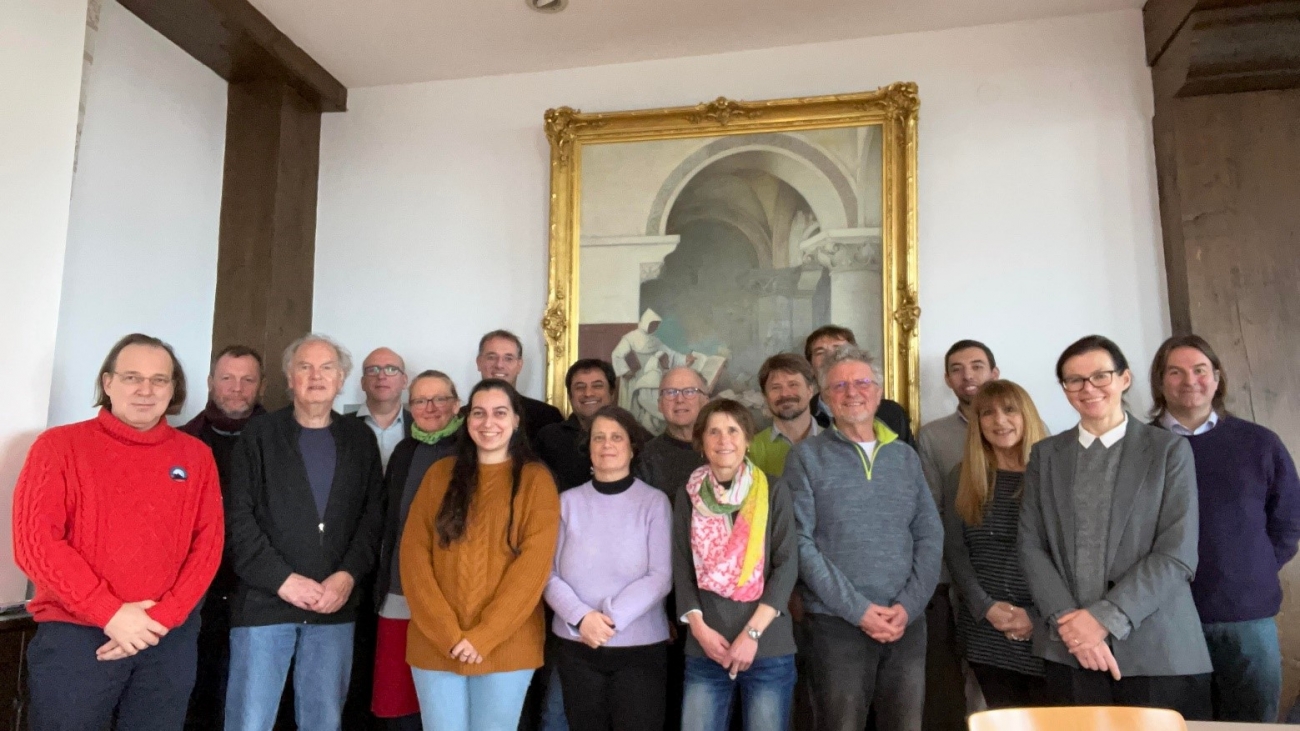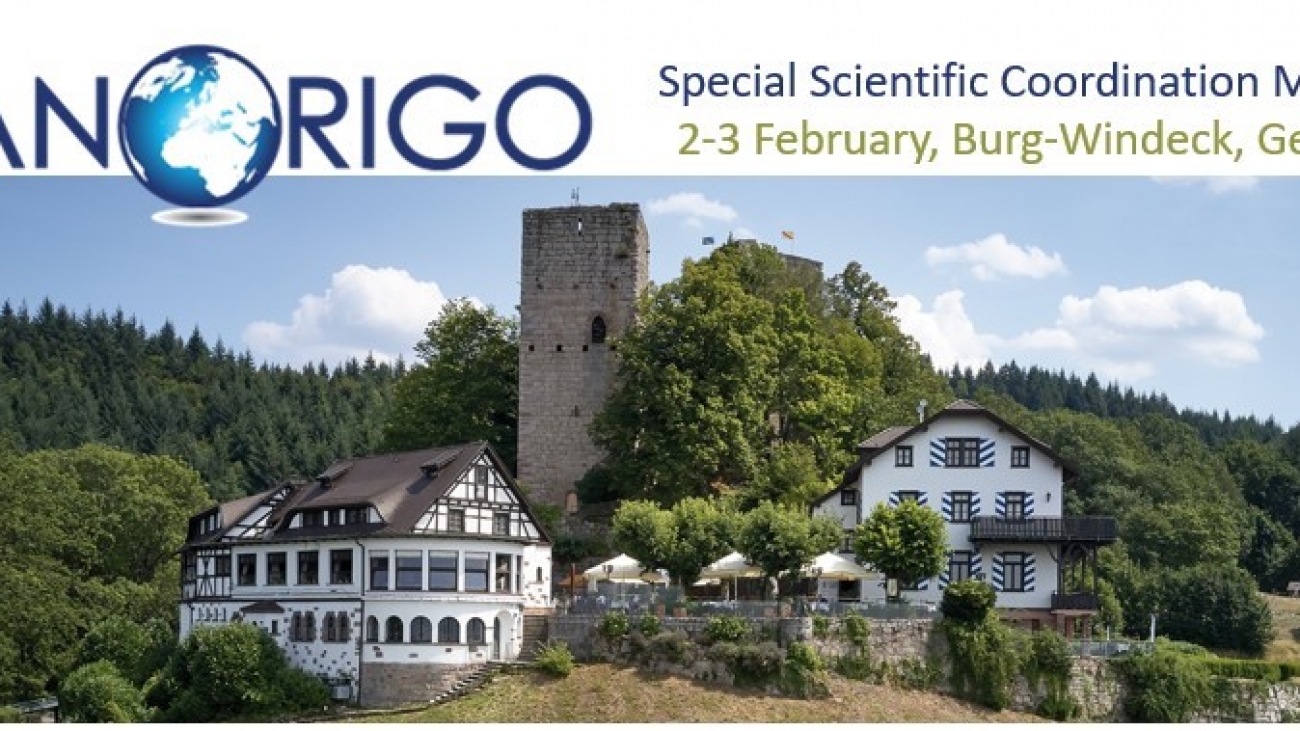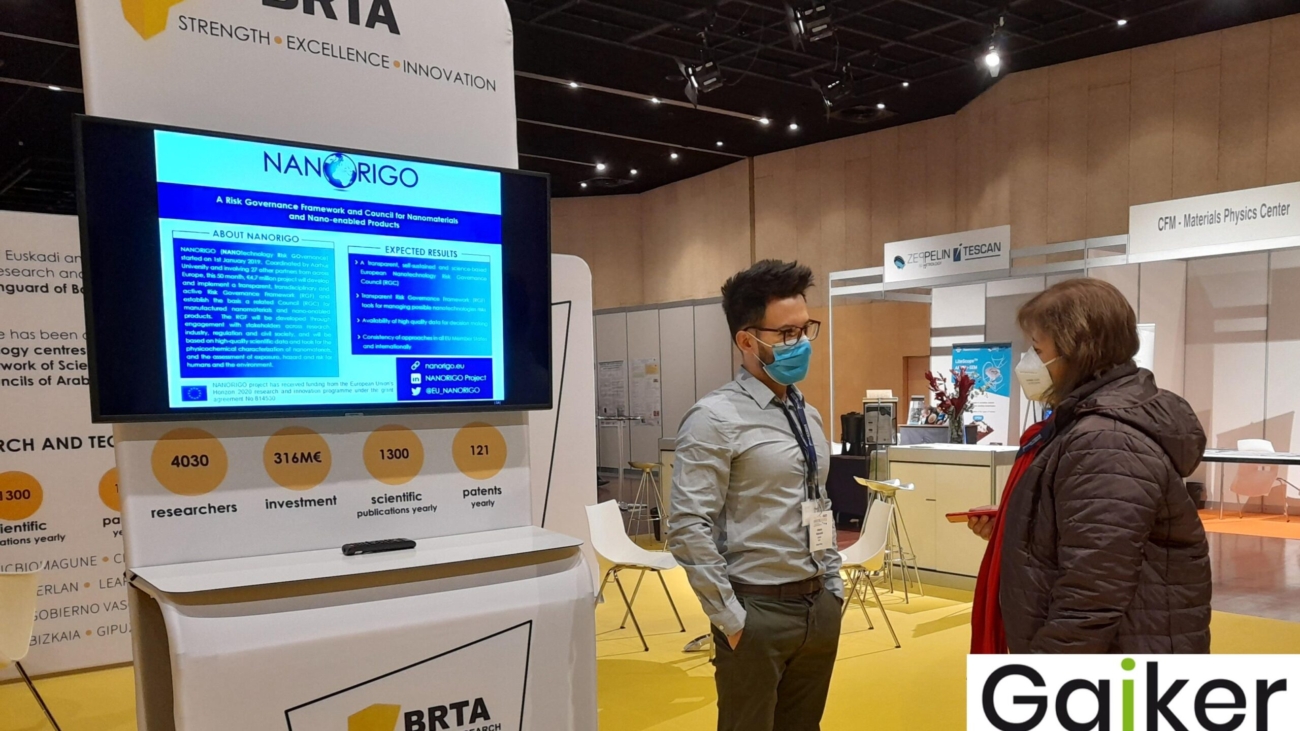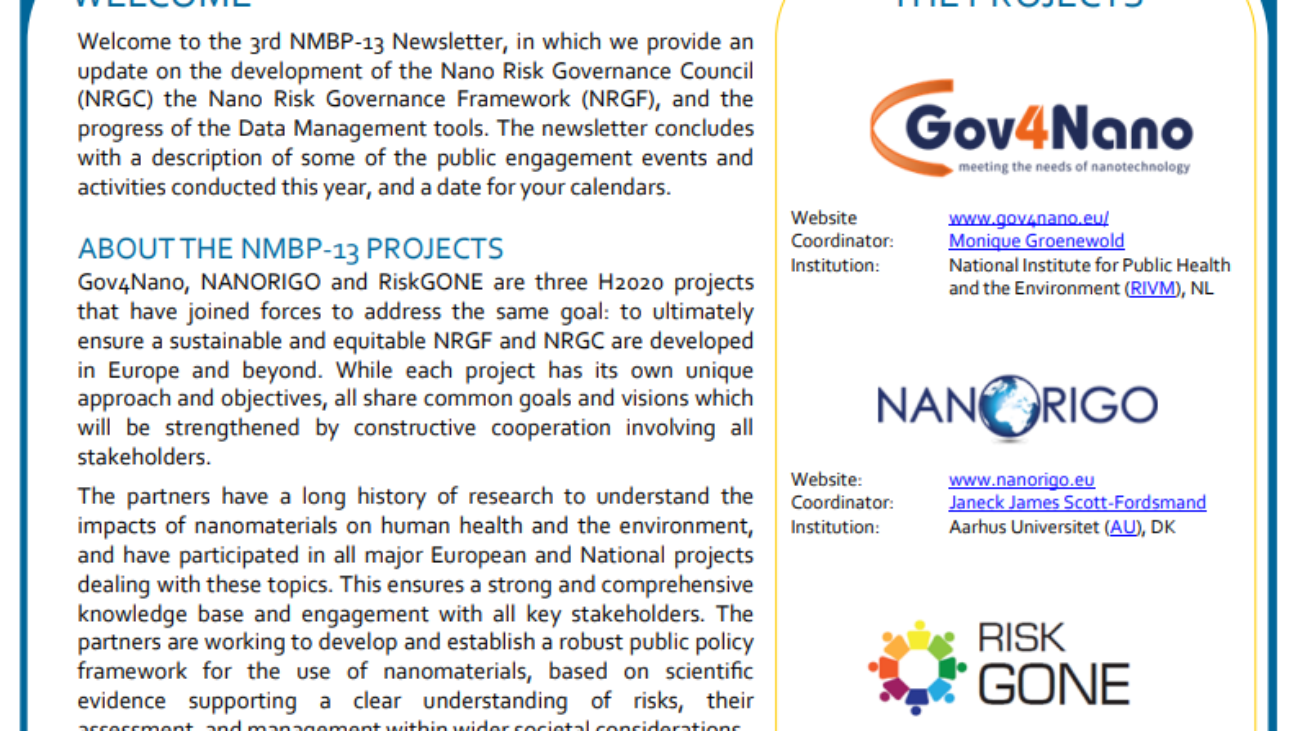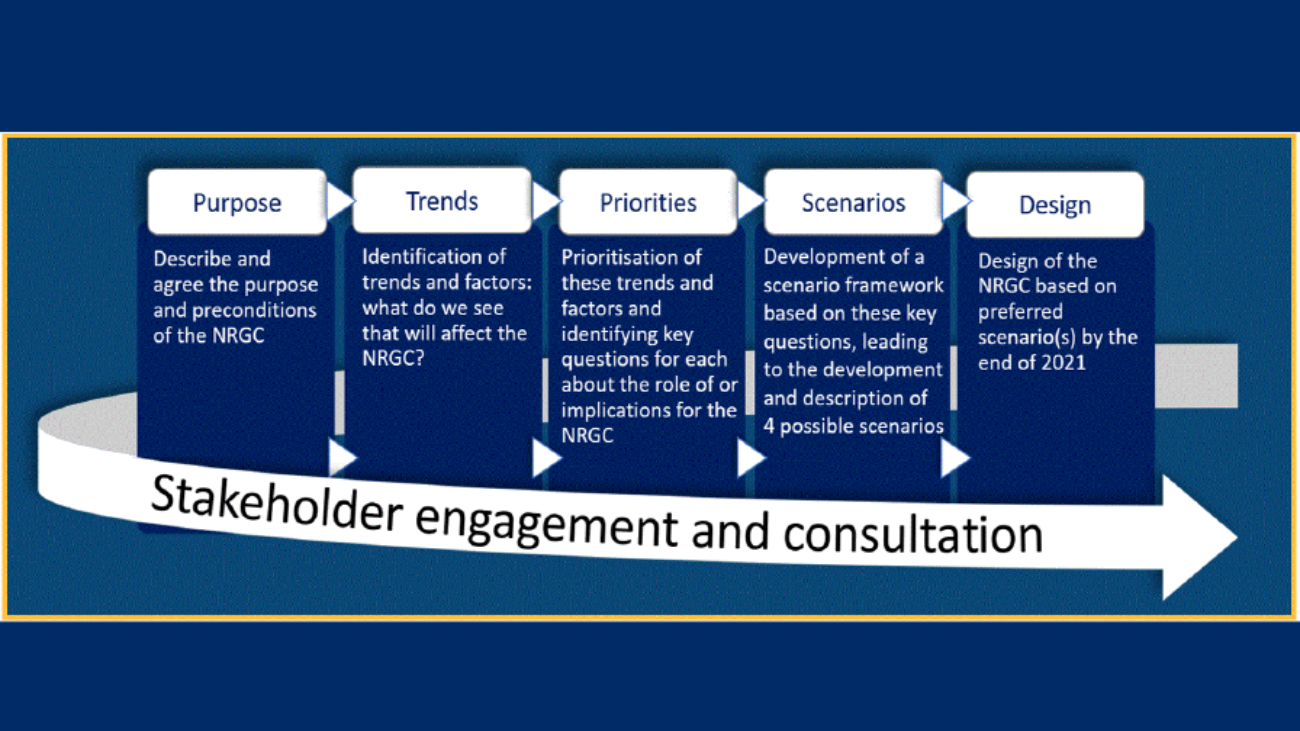NANORIGO partners met in person for the final time for a Special Scientific Coordination Meeting (SSCM) from Thursday 2nd – Friday 3rd February to review, discuss and reflect on what has been have achieved in NANORIGO over the past 4 years and discuss how to optimize and maximize the project’s impact.
The meeting, organised by Rudolf Reuther (ENAS), scientific coordinator of NANORIGO, was held in the beautiful location of Burg Windeck Castle, in the heart of Germany’s Black Forest.
Since 2019, the NANORIGO partners, together with their counterparts in sister projects Gov4Nano and RiskGONE have worked to create a framework for nano risk governance that would meet the needs of multi stakeholders in research, policy, industry, and civil society. NANORIGO partners specifically aimed at further developing the means for transdisciplinary risk governance for engineered nanomaterials (ENMs) to guide and support decision–makers in the safe and sustainable handling and use of these advanced materials, towards new and responsible innovations. The NANORIGO SSCM thus provided a platform for deliberation on the societal, political, economic, technological, legal and environmental issues important to the Risk Governance Framework and associated Tools developed within the project and how its outcomes can best serve stakeholders, now and in the future.
The proceedings began with a warm welcome from Rudolf Reuther. This was followed by an overview from Mark Morrison, the dissemination lead, of the recently held joint final meeting of the three projects at the OECD in Paris in which he summarised the discussions held by the four round tables: harmonisation and standardisation, portal and tools, data, and Risk Governance (House). Damjana Drobne (University of Ljubljana), the data expert within the project, emphasised the need for a framework for human and machine actionability, transparency, and reusable data.
A main subject of discussion was the Risk Governance Portal that has been created, and which entities within the NanoSafety community have the potential to maintain and develop it. Budgetary considerations and a lack of resources may hamper its future, and the question of who would use it was addressed. Notwithstanding, all agreed that the stakeholder engagement and consultation implemented over the four years of the project was one of its key strengths.
The work of the NANORIGO consortium was aligned with recent developments in various EU strategies, including the Chemicals Strategy for Sustainability (CSS), launched in 2020; and the European Partnership for the Assessment of Risks from Chemicals (PARC), launched in 2022. It has also been impacted by the stronger focus on principles of ‘Safe and Sustainable by Design’ (SSbD), announced within the CSS, to foster the implementation of the European Green Deal (launched in 2019). These strategic and legislative roles of the risk governance framework thus became the subjects of a lively ‘House of Commons’ debate, led by Kees Le Blansch (KLB), which enabled participants to tease out contentious statements, such as: ‘If growth and competitiveness are the emphases, we should forget risk governance and just pay it lip service’; and ‘The CSS and the SSbD pay lip service to SE but fail to realise it and are thus doomed to fail’. Martin Mullins (Transgero/University of Limerick) made the valid point that the EU uses regulatory normative processes to gain competitiveness; and with regulation comes competitive advantage. It was agreed that regulation is both essential and beneficial to competitive advantage.
In a third session, the participants examined the prospects of maximising, and operationalising the impact of the project’s outcomes from the standpoint of its upcoming deliverables, including an integrative perspective on stakeholder needs, led by Daan Schuurbiers (DPF); the Risk Communication Platform, led by Dana Kuehnel (UFZ); the Risk Governance Framework guidance document, led by Rudolf Reuther on behalf of Milja Koponen (TTL); the Publication on economic benefits from implementing the RGF, based on case studies, led by Martin Mullins (TGO); and an examination of options for the form and funding of a Nanotechnology Risk Governance Organisational Form, led by Mark Morrison (Optimat). Pieter van Broekhuizen highlighted that the role of a moderator had been mentioned a few times and, ‘If we want to improve risk communications, a moderator would be very useful to guide all the others’.
The session concluded with a multimedia presentation of the results of the NANORIGO case studies, created by Martin Himly, Sabine Hofer, Norbert Hofstaetter (PLUS), with a specific focus on the rubber tyre case study.
Day two of the meeting provided a platform for all attendees to reflect and contribute to a discussion on lessons learned from the project, its particular strengths such as the user committee, and ways forward. Dana Kuehnel flagged up the importance of Damjana Drobne’s KaRL approach (Knowledge Readiness Levels), which enabled partners to realise how much more can be enacted for data readiness. Damjana Drobne made the salient point that what NANORIGO contributed to the transparency of the ecosystem, and we need positive change.
Concluding, Rudolf Reuther commented: ‘It has been a learning process in relation to what we thought, and it’s opened the way to seeing complexity and finding solutions. We have to think in a more holistic way. Everything has risks and benefits, but we have to make things inclusive and sustainable […] conditions change, and we have to adapt and be proactive too.’
The outcomes and a synthesised report will be made available to all interested stakeholders

